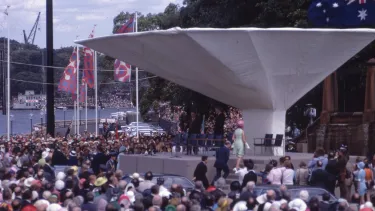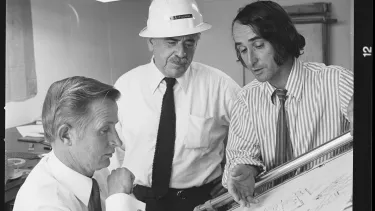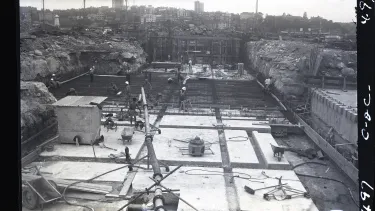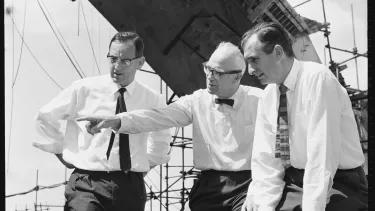Sydney Opera House: Concept, Innovation and Renewal
8 November 2023
In the Utzon Room
Join us in the Utzon Room for an insightful series of talks with industry leaders about the Sydney Opera House’s creation and its future. From concept to realisation, innovation to renewal, we’ll share new research and reveal untold stories about the contribution of architects, engineers, and builders to Australia’s masterpiece of 20th century architecture.
| Date | Time |
| Wednesday 8 November | 9am - 4.30pm |
| Ticket | Price |
| Standard (2 Ticket Limit) | $149 |
| Student (2 Ticket Limit) | $49 |
PLEASE NOTE: Tickets to this event include meals. If you have specific dietary requirements, please select the appropriate price type when booking.
Wheelchair accessible
Find out more about accessibility at Sydney Opera House
Run time
Full-day symposium, 9am - 4.30pm
Event duration is a guide only and may be subject to change.
Program
Also on this page
Uncovering untold stories from the creation of the Opera House
In this full day symposium, you’ll hear from a series of subject matter experts as they unpack the significance of its architecture, construction, and the technological innovations that have shaped the icon we love today.
Learn about Jørn Utzon’s vision, methodology and approach to working, Peter Hall’s contribution to the interiors and his interpretation of Utzon’s work, and the future social, political and renewal challenges and opportunities that stand ahead for the Opera House.
Through new research, we’ll reveal untold stories from the creation of the Opera House as we celebrate its 50th anniversary.
Thank you to Event Sponsors: Architects Registration Board NSW, Australian Institute of Architects and the Commonwealth Government’s Australian Heritage Grant program. We also acknowledge ArchitectureAU.
Gallery
of
Overview of the program
The symposium is split into four sessions: concept, innovation and renewal, and reflection. The sessions will be single speakers providing short talks (from 10 to 20 minutes each), panel discussions and a plenary panel discussion at the end of the day that will focus on the outcomes of the symposium and reflect on challenges and opportunities for the future for the Sydney Opera House.
Welcome to the Sydney Opera House symposium. Arrive before the session starts for a coffee or tea and mingle with colleagues in the Utzon Room.
8.30am
Utzon Room opens
8.30 - 9am
Ticket holder arrival
9am
Symposium commences
The day will commence with a welcome by Louise Herron, Sydney Opera House (SOH) CEO. Convenors, architects and members of the SOH Design Advisory Panel Ken Maher AO and Peter Mould, will introduce the themes of the symposium – concept, innovation and renewal, and what we can expect from a fruitful day of talks and panel discussions. Our first speaker is Dr Penny Stannard, A/Director of Collections, Museums of History NSW, will contextualise the Opera House’s inception in the context of Sydney’s post-war political landscape across arts and policy between the 1950s and 70s.
9am
Welcome to Country
Savannah Fynn, Metropolitan Local Aboriginal Land Council
9.10am
Welcome from Sydney Opera House
Louise Herron
CEO, Sydney Opera House (SOH)
9.15am
Sydney Opera House: Concept, Innovation, Renewal: An Introduction
Ken Maher, AO, Peter Mould
SOH Sydney Design Advisory Panel Members (DAP)
9.25am
Emergence of an idea: an opera house, Sydney, and post-war Australia
Dr Penny Stannard,
Head of Curatorial & Research, Museum of History NSW
On 13 September 1955 the NSW Government announced an international competition for the design of a national opera house at Bennelong Point, Sydney. In the years leading up to the announcement post-war reconstruction efforts, cultural policy directions and influential voices from Australia’s political, artistic, and academic elite coalesced to form a shared ambition for an opera house that would be comparable – even unrivalled – with any in the world. This paper discusses the Sydney Opera House story in the decade prior to the awarding of the commission to Jørn Utzon. Lesser known than accounts of the design, construction and opening of ‘The House’ in 1973, the cultural, social, and political forces that combined to progress the idea of an opera house from the imagination of a few to the public at large, was truly remarkable.
Take a deep dive into the roles of Jørn Utzon, Ove Arup and Peter Hall in the conception and realisation of the Sydney Opera House, recognising their contribution to the creation of the now UNESCO World Heritage listed site.
Architect Richard Johnson AO (JPW Architects) will speak about Jørn Utzon’s vision, methodology and re-engagement in the late 1990s. We will hear from Tristam Carfare (Arup, London) as he unpacks Ove Arup’s concept of ‘total architecture’. Finishing off session one, will be Dr Anne Watson (independent researcher and curator) who will speak about Peter Hall’s design philosophy in the completion of the interiors of the Opera House.
9.45am
Concept: An Introduction
Abbie Galvin
NSW Government Architect, SOH DAP
9.50am
Jørn Utzon: Sydney Opera House concept and realisation
Richard Johnson, AO
JPW Architects
This short talk will attempt to outline the significance of the Sydney Opera House, its role in the cultural life of the city and reflect upon ideas, inspiration and design principles central to Utzon’s architecture and way of working.
It will illustrate an approach to design with a fundamental focus on human experience and inspiration drawn from a deep observation of nature.
Utzon’s theory of additive architecture creating a rhythm of elements inspired by nature and enabling prefabrication, his understanding of materials and craft and the concept of integration of all building elements into a harmonic unity of form and experience will be briefly examined.
10.10am
Ove Arup: Collaborative engineering design
Tristram Carfare
Arup
When Ove Arup first learned about Jørn Utzon’s imaginative, lyrical concept for a new Opera House in Sydney, he immediately offered to help.
He had established his firm of consulting engineers, Ove Arup & Partners (now simply Arup) in London, specifically to help modernist architects realise their ideas. His partner Ronald Jenkins was world renowned for the design of thin concrete shells, so an Utzon-Arup collaboration appeared to be perfect, and so, after many twists and turns, it proved to be.
Working intimately together the two Danes wrestled with integrating the beautiful but irrational initial geometry into a constructable building. This was finally resolved by Jørn’s decision to use a spherical geometry that unlocked the engineering and construction of this world icon.
The design of the Sydney Opera House can be seen as the prototypical architect + engineer collaboration, what Renzo Piano later referred to as “playing ping pong”, bouncing ideas backwards and forwards until an integrated whole emerges.
10.30am
"What were we supposed to build?" Peter Hall's conceptual conundrum
Dr Anne Watson
Independent Researcher and curator
When Peter Hall (1931-1995) accepted the invitation to complete the Sydney Opera House after Jørn Utzon’s withdrawal in early 1966, he inherited a logjam of problems including the unresolved designs of the two main auditoria and the building’s enclosing glass walls. Evolving a conceptual approach that tied innovation to function, he drew on the precedent of the building itself, Utzon’s ideas and designs, his own creativity and the contribution of technical experts.
This presentation will focus on Hall’s innovative use of moulded plywood throughout the Opera House interiors, his selection of bold colour schemes reflecting the lively spirit of the times, the visionary commissioning of artworks, and his pioneering collaboration with internationally-renowned lighting specialists. His legacy today is a performing arts centre that is beloved by visitors and performers and that aesthetically, functionally and experientially pays homage to the building’s spectacular exterior.
10.50am
Morning break
Catering in the Utzon Room
Gain new insights on the innovation of the SOH through recent research by leaders in architecture, construction and engineering.
Professor Phillip Goad (University of Melbourne) will examine the design competition and Utzon’s unique entry, provoking the idea of what else the Sydney Opera House could have been.
Tristam Carfare (Arup) will share research on the role of innovation in engineering, and Professor Paolo Tombesi (École Polytechnique Fédérale de Lausanne) will share new research on how the Opera House shells were built.
The session will conclude with the first panel of the day.
11.15am
Innovation: An Introduction
Prof. Helen Lochhead
UNSW Sydney, SOH DAP
11.20am
Competition in context: Innovation, modern architecture and the Sydney Opera House
Prof. Phillip Goad
University of Melbourne (UoM)
Jørn Utzon’s 1956 competition design for the Sydney Opera House and its development to 1962 has been widely and intensively studied. The design’s much vaunted Promethean process of iteration and refinement has led to labels of innovation and the hailing of the Sydney Opera House as a major work of mid-twentieth century architecture. But little examined is the international and local context of discourse and production for that ‘innovation’. This paper places Utzon’s design within its diverse contexts: of competitions in Australia and internationally after 1945; contemporary performing arts complexes; experimentation in concrete shell structures as new forms of monumental and spatial expression; and the arguably new conceptual settings for modern architecture of landscape and cross-cultural allusion.
11.40am
SOH: Delivering new technologies
Tristram Carfare RDI
Arup
The design and construction of the Sydney Opera House is full of innovation. It was the first time that digital computers, then resident in university basements, were used in structural analysis, and later in the construction surveying.
The sails were made using repetitive match-cast concrete segments, clamped together by post-tensioned steel strands, with a thin layer of epoxy in between. This was the first time glued segmental construction was used, now commonplace in building big bridges.
The building is clad with precast concrete tile lids, the concrete cast directly on an upturned bed of Swedish ceramic tiles, then clipped into place on exquisitely detailed fixings that allow cladding and structure to move independently and provide a durable, beautiful, waterproof whole.
The sails were constructed by an on-site factory devised by the progressive builder Hornibrook, with pieces made at the South end of the site and then assembled in situ to the North using two rail mounted cranes that steadily retreated towards the harbour leaving the completed sails behind them. Fifty years later, we call this approach “modern methods of construction”.
The geometry of the glass walls, wonderfully resolved by Hall Todd & Littlemore, is much more complex than the sails themselves. After thorough research, these massive, top hung walls are built using laminated glass (safety glass), used for the first time in a building.
11.55am
Tracks, beds, cradles and needles: The construction of the sails
Prof. Paolo Tombesi
École Polytechnique Fédérale de Lausanne (EPFI)
Within ‘normal’ architectural projects, building contractors are not expected to produce large amounts of drawings. In the Sydney Opera House, by contrast, the contractor Hornibrook generated over 5,000 of them, many of which played a major role in the definition of critical details of the building and its development process. The levels of technical sophistication and inventiveness that emerge from their analysis today permit to gauge, in hindsight, the importance of the Australian contribution to the making of the building’s structure and its sails.
12.15pm
Panel 1: Innovation and Research
Moderator: Peter Mould (SOH DAP) and panellists Phillip Goad, Paolo Tombesi, Tristam Carfrae, Anne Watson
12.55pm
Lunch
Catering in the Utzon Room
After lunch, we will hear about how the Opera House is renewed for future generations of artists, audiences and visitors and our plans for conserving this iconic building.
Ian Cashen (Director of Building, Safety and Security, SOH). will speak about the past decade of renewal projects, and Alan Croker (Director Design 5 and author of the SOH conservation management plan) will talk about the process of managing change at such a significant building.
Finally hear from Andrew Hayne (ARM Architects) about the award-winning Concert Hall renewal project, completed in 2022.
2pm
Renewal: An Introduction
Sheridan Burke, SOH DAP
2.05pm
Decade of renewal
Ian Cashen
Executive Director, Building, Safety and Security, Sydney Opera House
The ‘Decade of Renewal’ saw the successful delivery of the largest capital investment in the Sydney Opera House since its original construction. It commenced with the completion of a new underground loading dock and culminated with the successful refurbishment of the Concert Hall, addressing long standing issues with acoustics, safety and equitable access to the largest internal venue. In addition to these flagship projects, the full program saw many other parts of the building and precinct upgraded to improve safety, technical capacity and access. The presentation will showcase the program and outcomes, as well as the meticulous design and planning process guided by key foundational frameworks such as the Utzon Design Principles, Conservation Management Plan and Strategic Building Plan.
2.25pm
Managing change
Alan Croker
Director, Design 5 - Architects
Sydney Opera House is internationally acclaimed as both an architectural masterpiece and a performing arts centre – its ‘form’ and its ‘function’. These values cannot be considered separately; their fundamental interdependence being central to Jørn Utzon’s original vision. This vision was supported and executed through collaboration and innovation by all involved in the project, including Peter Hall in its completion.
Understanding, strengthening and celebrating this vision underpins most decisions at the House, particularly the design and execution of recent Renewal Projects.
Bold and innovative changes have been made that challenge previously accepted norms for conservation in Australia. This process of managing change at the Opera House, the role of the Utzon Design Principles and innovative tools introduced in the Conservation Management Plan, 4th edition, will be explained in this session.
2.45pm
Case Study: Concert Hall Renewal
Andrew Hayne,
Principal, ARM Architecture
As the architects entrusted with the renewal of the Sydney Opera House Concert Hall, we embarked on a transformative journey in the heart of architectural history. This talk delves into the challenges of revitalizing an icon, a structure deeply embedded in the cultural fabric of Australia. Navigating the delicate balance between preservation and innovation, we faced the weight of legacy while envisioning a bold, contemporary response.
Through meticulous planning and a team driven by reverence for the original vision, we embarked on a process that demanded rigour and ingenuity. The Concert Hall Renewal project stands as a testament to the power of the synergy between tradition and innovation. We will highlight some of the key ideas that underpin our interventions, demonstrating that through research and vision, even the most cherished icons can evolve without compromising their timeless essence.
The final session will reflect on the day’s talks, the role of the Opera House as a performing arts centre, the future challenges and opportunities for the building and its role in the arts.
In this session you’ll hear from Dr Scott Hill (Curator of The People’s House: Sydney Opera House at 50, Museums of History NSW) about the first year of performances when the building opened in 1973.
Louise Herron, Sydney Opera House, CEO, will reflect on the role of the House as a world-renowned performing arts centre and the approach to the future.
The day will end with a second and final panel discussion.
3.05pm
Reflections: An Introduction
Ken Maher, AO
SOH DAP
3.10pm
From Prokofiev to Les Girls: the first year of performance at the Sydney Opera House
Dr Scott Hill
Curator, Museums of History NSW
Officially opened on October 20th, 1973, the Sydney Opera House had already been operating as a performing arts venue for nearly a year. From acoustic tests to ‘gala’ openings, concerts to plays, to dance and exhibitions, in the months leading up to its opening the new venue was put through its paces. In revisiting the performances both before the opening and in the following year, we see that diversity – in production, content, cast and audience, was a feature of programming. Audiences were as likely to see a rock concert, a surf film or marionettes as they were a symphony or opera.
Several of these performances were broadcast internationally to huge audiences, cementing the role the iconic structure had achieved around the world as the image of modern Australia. Importantly, we also see that a strong Indigenous presence has been a part of Opera House programming since the curtains first rose
3.30pm
Everyone’s House: the next chapter
Louise Herron
CEO, SOH
Long before any plans had been drawn up, and long before the first stone had been turned, the Sydney Opera House was conceived as a cultural meeting place that belonged to the people around it. This is the simple but powerful idea that animates so much of what we do today as we start to write the next chapter of the Opera House story. With the 50th anniversary behind us, we are working towards transforming the building into Everyone’s House as we focus again on the foundational principles that underpin this living work of art.
3.45pm
Panel 2: Reflections
Moderator: Ken Maher (SOH DAP) and panellists Louise Herron, Richard Johnson, Alan Croker and Abbie Galvin
4.25pm
Conclusion of Symposium
Louise Herron
CEO, SOH
Unveiling of the Creators Project
Symposium attendees invited to the Box Office Podium for a glass of champagne and the unveiling of the Creators Project, recognising Sydney Opera House key creators Utzon, Arup and Hall.
Our speakers
As the 24th NSW Government Architect, Abbie leads an office established in the early day of the Sydney colony which has practiced for over two centuries.
Abbie is responsible for championing design excellence across the State and shaping quality places and public spaces through policy and advocacy.
Abbie brings experience from a 30 year career in private practice on public, education, residential, health, research and commercial projects and projects she has led have been the recipient of over 40 state, national and international architectural awards. Abbie is a Life Fellow of the Australian Institute of Architects, received the Marion Mahoney Griffin Prize for a distinctive body of work in the field of Architecture and is a former Director of BVN.
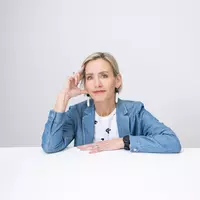
Alan Croker, founding director of Design 5 – Architects, has more than 40 years experience in conservation, adaptive re-use and new work across a broad range of project types and cultural contexts. He is particularly interested in conservation of both tangible and intangible heritage leading him to be involved with sensitive places and issues such as the Aboriginal Stolen Generations and the Sydney Opera House.
In 1998 Alan assisted James Semple Kerr with his revision of the 1st edition of the Opera House’s Conservation Plan. In late 2003 he was appointed to provide specialist conservation and heritage advice to the Opera House when Kerr retired and has since been involved with all major projects and issues at the site.
Alan is the author of Respecting The Vision, the 4th edition of Sydney Opera House’s Conservation Management Plan, 2017 – a crucial tool in guiding and managing major and minor changes as well as day to day issues at the House.
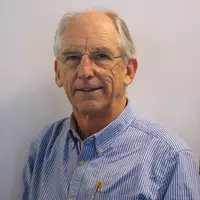
Anne Watson was formerly curator of architecture and design at the Powerhouse Museum 1981-2007 and has been an independent curator/writer since 2008. Her enduring fascination with the history of the Sydney Opera House began almost two decades ago when she was editor and a contributing author of Building a Masterpiece: the Sydney Opera House (Powerhouse Museum, 2006/2013). In 2017 she published The Poisoned Chalice: Peter Hall and the Sydney Opera House (OpusSOH) based on her 2014 doctoral thesis. Curatorial projects have included Utzon’s Masterpiece: the Sydney Opera House as the inaugural exhibition at the Utzon Center, Aalborg, Denmark (2008) and Building the Sydney Opera House at the Arup Gallery, London in 2014. Most recently she was commissioned to research the histories of the five tapestries in the Opera House collection, including the two magnificent John Coburn stage curtains.
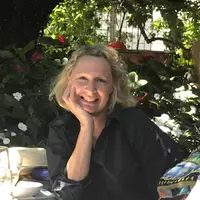
Andrew has over 20 years architectural experience and has been a key part of many of ARM’s highest profile performing arts venues. He has delivered projects around Australia including the Sydney Opera House Concert Hall Renewal, Smith Collective, Canberra Theatre Business Case and was an integral member on the National Museum of Australia and the high-profile MRC & MTC Southbank Theatres.
His work on the Sydney Opera House Concert Hall spanned seven years, from project inception through to the gala re-opening. Across this period he maintained excellent relationships with the client, resident companies, heritage stakeholders and the managing contractor on a complex World Heritage Listed national icon. This project recently won the NSW Architecture Medallion.
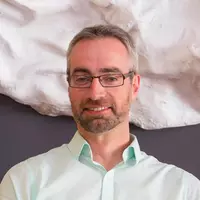
Professor Helen Lochhead is an architect, landscape and urban designer combining academic and expert advisory roles with practice. Her career has focused on the inception, planning, design, and delivery of complex urban projects ranging from city improvements programs to major urban regeneration projects in Australia and internationally.
Her projects have received numerous awards including AIA and AILA Urban Design and Sustainability Awards including the AIA Lloyd Rees Award for Urban Design and the City of Sydney Lord Mayor’s Prize for urban design excellence.
Helen has held numerous influential roles in government, industry and universities including Dean, Faculty of Built Environment and Pro Vice-Chancellor Precincts at UNSW Sydney 2016-22, Deputy NSW Government Architect and National President of the Australian Institute of Architects. She currently serves on the Australian Heritage Council, the National Capital Authority and various Planning and Design Panels across Australia including the Sydney Opera House Design Advisory Panel.
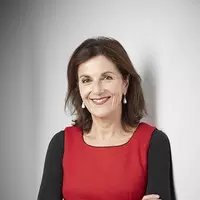
With formal training as a civil engineer, Ian has more than 20 years’ experience in construction and asset management. Ian’s experience spans the asset lifecycle including the development of strategies, planning and delivery of capital projects, and operations and maintenance management.
Ian joined the Sydney Opera House in 2016 after 12 years with infrastructure advisory firm Evans & Peck (now known as Advisian). Ian was a Principal of the firm responsible for providing a range of high value advisory services to clients as well managing the operations of the NSW branch comprising of 70 consulting staff.
Ian’s earlier career included experience in design and project management of high profile projects including a number of the Sydney Olympics venues. With this as a foundation Ian developed broader expertise, fulfilling leadership roles for delivery of major projects as well as reform initiatives for improving operations and maintenance of major assets.
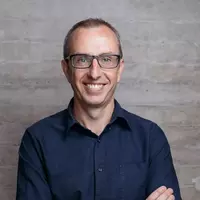
Ken is an architect, landscape architect, founding Hassell Fellow and Honorary Professor in the School of Built Environment at UNSW Sydney. Current appointments include chairing the City of Sydney’s Design Advisory Panel, Landcom Design Review Panel, and the Sydney Opera House’s Design Advisory Panel, and is also a member of State and National Design Review Panels. Ken is a past National President of the Australian Institute of Architects and the Australian Sustainable Built Environment Council and was a founding director of the ACT City Renewal Authority board. He is a recipient of the Australian Institute of Architects Gold Medal and the Australian Award for Landscape Architecture from the Australian Institute of Landscape Architects. Ken’s recognition as a designer is also reflected in the numerous architectural and design awards received for projects he has led. In the 2018 Queen’s Birthday Honours he was made an Officer of the Order of Australia.
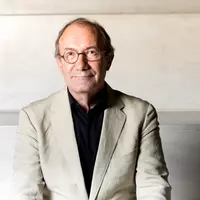
Louise has been CEO of the Sydney Opera House since 2012, after careers as a lawyer and corporate adviser. In her time as CEO, Louise has delivered a far-reaching decade of renewal to open the Opera House up to more of the community, with a broader, more diverse range of programming and other experiences to welcome more visitors in person and online.
Renewal included the largest and most transformative series of building works since the Opera House opened in 1973. The program, totalling more than $300 million, has touched all corners of the building and opened new spaces to the public – from the removal of vehicles on the Forecourt to the new Centre for Creativity and refurbishing the Concert Hall, as well as significant improvements for visitors with limited mobility.
The Opera House also recently completed its year-long 50th anniversary celebrations, involving a program of more than 230 special performances and activities for the whole community to celebrate the past, present and future of Australia’s favourite building. The 50th has been a launching pad for the Opera House’s ambition to be Everyone’s House.
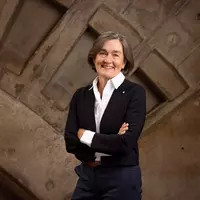
An architect by training, Paolo Tombesi has a long-nurtured interest in the relationship between the intellectual dimension of building and the socio-technical aspects of its physical construction.
He has been the Professor of Construction and Architecture at EPFL, in Switzerland, since 2016. Between 2017 and 2020, he directed the university’s Institute of Architecture and the City. Prior to his appointment, he held the Chair in Construction at the University of Melbourne, where he worked for 20 years and where he retained the Professorship of Building until 2021.
A former Fulbright Fellow, he has a PhD from UCLA on the distribution of technical design knowledge in the building industry. Since 2020, he has been conducting research in collaboration with colleagues Cardellicchio, from the University of New South Wales, and Stracchi, from the University of Sydney, on the technical documentation produced for the Sydney Opera House.
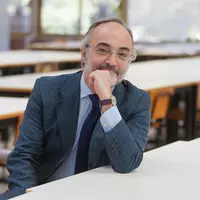
Penelope Stannard is the A/Director, Collections at Museums of History NSW. In this executive role, she has oversight of the care, management, discoverability and accessibility of the State Archives Collection, 11 museum collections and the Caroline Simpson Library Collection.
Penny has over 25 years’ experience in the cultural and associated sectors, incorporating senior roles in government with responsibility for arts/culture portfolios. She has gained wide and diverse experiences across the history, heritage, museums, education, curatorial, research and arts policy spheres delivering knowledge, engagement and cultural planning outcomes for communities across NSW. Her notable achievements include serving on Australian arts funding and advisory committees advising on policy and funding directions concerning Western Sydney, music, dance, women and health.
She has held non-executive director roles with public-funded Australian arts companies including Sydney Chamber Opera, Ausdance and Ensemble Offspring. Penny holds a PhD from the University of Technology Sydney in cultural policy studies and history.
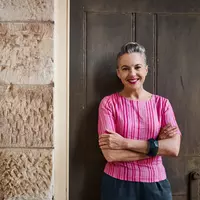
Peter Mould is a former NSW Government Architect with over 40 years experience in Australia and overseas. He was the founding chair of the Eminent Architects Panel (now Design Advisory Panel) for the Sydney Opera House in 2010 and is a member of Design Review Panels in Sydney and interstate. He has sat on over 50 design juries for projects in Australia and internationally.
He has served on NSW Heritage Council and chaired its Approvals Committee, the Central Sydney Planning Committee, and the NSW Architects Registration Board. His projects have received awards for architecture, urban design, and adaptive reuse. He was Visiting Professor and later Adjunct Professor at UNSW.
Peter was awarded the Australian Institute of Architects (NSW) President’s Prize for his contribution to architecture in 2011. He is a Life Fellow of the Institute and was a Councillor for the International Union of Architects, and a Member of UNESCO-UIA Joint Committee for the World Capital of Architecture.
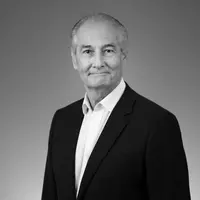
Philip Goad is Redmond Barry Distinguished Professor, Chair of Architecture, and Co-Director of the Australian Centre for Architectural History, Urban and Cultural Heritage (ACAHUCH) at the University of Melbourne. He is also Chair of the Heritage Council of Victoria.
He is co-author and co-editor of Modern Times: The Untold Story of Modernism in Australia (2008), The Encyclopedia of Australian Architecture (2012), Bauhaus Diaspora and Beyond: Transforming Education through Art, Design and Architecture (2019), and Australia Modern: architecture, design and landscape architecture 1925-1975 (2019).
In 2019–20 he was Gough Whitlam Malcolm Fraser Chair of Australian Studies at Harvard University. He is a Fellow of the Australian Academy of Humanities (FAHA) and Life Fellow of the Australian Institute of Architects (LFRAIA). In 2005, he gave expert advice to the NSW Government in building its case for the UNESCO World Heritage Listing of the Sydney Opera House.
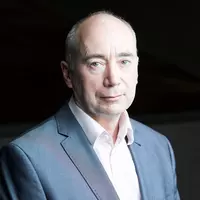
Richard Johnson is a Founding Director of Johnson Pilton Walker (JPW) a leading Australian Architectural practice.
His contribution to Architecture and the Arts is recognised by an MBE, The RAIA Gold Medal, RAIA life Fellow, Life Governor of the AGNSW, Distinguished Alumni UNSW and the Order of Australia.
He is currently an Honorary Professor UNSW BE and serves on City of Sydney Design and Public Art Advisory Panels.
Richard was an advisor to the SOH Trust from 1998 to 2008 and together with JPW collaborated with Jorn Utzon and Jan Utzon on a number of key SOH projects.
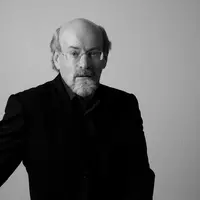
Dr Scott Hill is a curator with Museums of History NSW, with particular interest in historic architecture, landscape and interiors, and the interpretation of the ephemeral including food and dining in house museums. He is Senior Curator for the exhibition The People’s House: Sydney Opera House at 50, currently on show at the Museum of Sydney.
His PhD in Architecture from the University of Sydney – ‘Paper houses: John Macarthur and the 30 year design process of Camden Park’, examined significant colonial figure John Macarthur and his interest in architecture, and the transmission of British design and building to the colony.
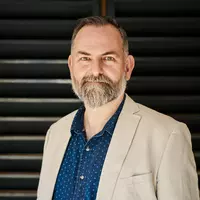
Sheridan Burke was the foundation president of the ICOMOS international Scientific Committee on Twentieth Century Heritage and is currently its Secretary General. She is a Sydney based heritage consultant trained in planning and architecture with 40 years experience working across Australia and internationally in NGO, government and commercial roles.
Sheridan is a member of the Sydney Opera House Conservation Council and its Eminent Architects Panel (now the Design Advisory Panel). She is an expert member of several State Planning Panels and former deputy chair of the NSW Heritage Council and chair of the State Heritage Register Committee. She is currently chair of the Eryldene Trust.
Sheridan has undertaken World Heritage missions for UNESCO and served on the ICOMOS international Board and is currently Vice President of the Advisory Committee. She was Adjunct Professor at the University of Canberra and an adviser and lecturer for the Getty Conservation Institute’s Conservation of Modern Architecture Initiative since 2011.
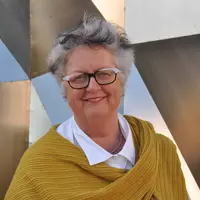
Tristram Carfrae is one of Arup’s Deputy Chairs and an Arup Fellow. He chairs our Digital Executive and sponsors our strategy for being excellent in all that we do. A structural engineer by practice, he has contributed to many award-winning buildings, including the Water Cube for the Beijing 2008 Olympic Games. He currently leads Arup’s team helping complete Gaudi’s La Sagrada Familia in Barcelona using digital fabrication and modern methods of construction.
He is a Fellow of the Royal Academy of Engineering, was appointed a Royal Designer for Industry (RDI) in 2006, and received the Institution of Structural Engineers' Gold Medal in 2014 and IABSE's International Award of Merit in Structural Engineering in 2018.
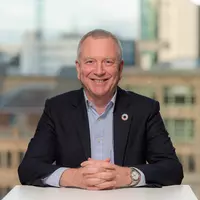
Other information
Venue information
Our foyers will be open 90 minutes pre-show for Concert Hall and Joan Sutherland Theatre performances, and two hours pre-show for Western Foyer venue performances. Refreshments will be available for purchase from our theatre bars.
All Sydney Opera House foyers are pram accessible, with lifts to the main and western foyers. The public lift to all foyers is accessible from the corridor near the escalators on the Lower Concourse and also in the Western Foyer via the corridor on the Ground Level (at the top of the escalators). Pram parking will be available outside the theatres in the Western Foyer.
Getting here
The Sydney Opera House Car Park, operated by Wilson Parking, is open and available to use. Wilson Parking offer discounted parking if you book ahead. Please see the Wilson Parking website for details.
Please check the Transport NSW website for the latest advice and information on travel. You can catch public transport (bus, train, ferry) to Circular Quay and enjoy a six minute walk to the Opera House.
Covid-safe information
The health and wellbeing of everyone attending the Opera House is our top priority. We’re committed to making your experience safe, comfortable and enjoyable, with a number of measures in place including regular cleaning of high-touch areas, air conditioning systems that maximise ventilation, and hand sanitiser stations positioned in all paths of travel. We remind our audiences and visitors to please stay home if you feel unwell. If you need to discuss your ticketing or booking options, contact our Box Office team on 02 9250 7777.
The health and wellbeing of everyone attending the Opera House is our top priority. We have a number of safety measures in place including regular cleaning of high-touch areas, air conditioning systems that maximise ventilation, and hand sanitiser stations positioned in all paths of travel. While face masks are no longer required, we ask all our patrons and visitors to practise good hygiene.
The Sydney Opera House no longer requires patrons to show that they are fully vaccinated against COVID-19.
Frequently asked questions
Ticket purchases and collection at our Box Office is discouraged and eTicket or postal delivery methods should be used, wherever possible. However, if you are collecting your tickets from the Box Office, we recommend doing this at least 60 minutes before the event starts. If you have already received your tickets, the venue doors will be open 45 minutes pre-show for Joan Sutherland Theatre performances, and 30 minutes pre-show for Western Foyer venue performances. Please take your seats as soon as you arrive.
If you are late, we will seat you as soon as we can and, where possible, in your allocated seat. However, to reduce movement in the venue as well as minimise disruption to the performance and other patrons, ticketholders may be seated in an allocated latecomer’s seat. Please be aware that some events have lock-out periods. In these cases, latecomers will be admitted at a suitable break in the performance. On occasions, this may not be until the interval, or at all where there is no interval.
Details of our right to refuse admission can be found in our General Terms and Conditions for Tickets and Events.
In accordance with our venue security procedures, Opera House security will be scanning and checking bags under the Monumental Stairs, prior to entering the building. Bags will be scanned by an x-ray machine, and staff will wear appropriate personal protective equipment (PPE) when handling your belongings, such as gloves. Cloaking facilities will be open 60 minutes pre-show for Concert Hall and Joan Sutherland Theatre performances, and 60 minutes pre-show for Western Foyer venue performances. However it is strongly encouraged that you travel lightly to minimise contact and queuing. Any bags larger than an A4 piece of paper will need to be checked into the Cloak Room.
The authorised agency for this event is the Sydney Opera House.
Only tickets purchased by authorised agencies should be considered reliable. If you purchase tickets from a non-authorised agency such as Ticketmaster Resale, Viagogo, Ticketbis, eBay, Gumtree, Tickets Australia or any other unauthorised seller, you risk that these tickets are fake, void or have previously been cancelled. Resale restriction applies. For more details, please refer to our General Terms and Conditions for Tickets and Attendance at Events.
Please contact Box Office on +61 2 9250 7777 as soon as possible to advise if you can no longer attend.
Foyers will be open 90 minutes pre-show for Concert Hall and Joan Sutherland Theatre performances, and two hours pre-show for Western Foyer venue performances. Refreshments will be available for purchase from our theatre bars.
The venue doors will be open 45 minutes pre-show for Concert Hall and Joan Sutherland Theatre performances, and 30 minutes pre-show for Western Foyer venue performances.
Please bring a credit or debit card for any on site purchases to enable contactless payment. You’re welcome to bring your own water bottle but no other food and drinks are permitted inside our venues.
The health, safety and wellbeing of everyone at the Sydney Opera House is our top priority. In line with this commitment, the Opera House became a smoke-free site in January 2022. Read our Smoke-free Environment Policy.
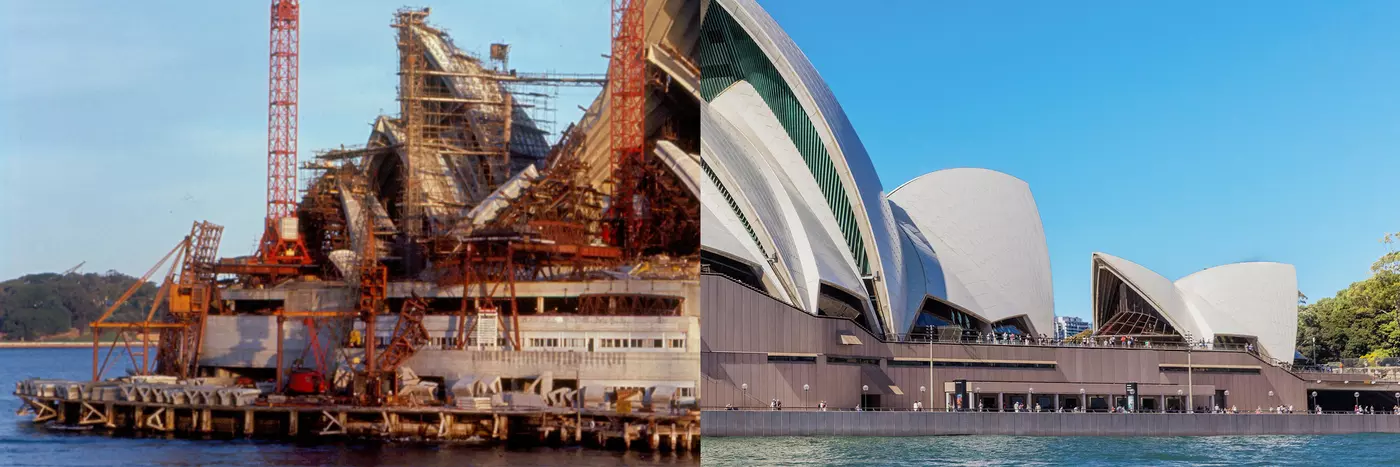
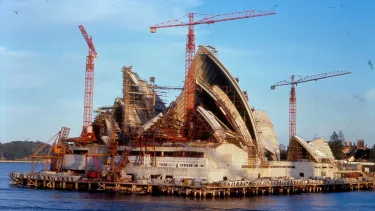
![Tile drying storage, August 1964, Max Dupain. Mitchell Library, State Library of NSW [ON 562/nos. 370-372]](/sites/default/files/styles/16x9__375w/public/collaborodam_assets/soh-tile-drying-storage-16-9.jpg.webp?itok=5v63OIH0)
